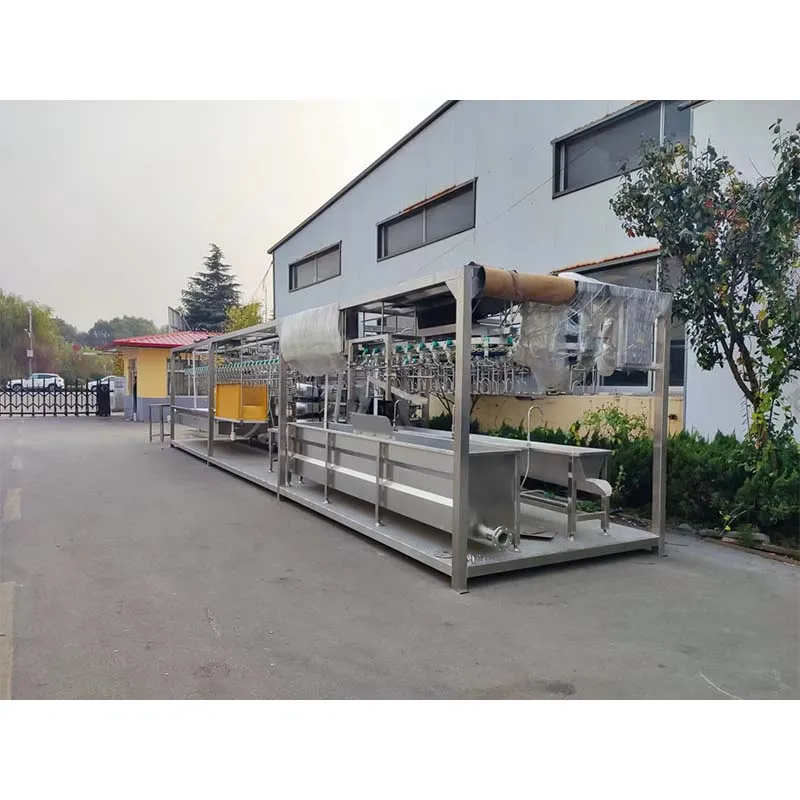grain feed mixer
Nov . 14, 2024 15:34 Back to list
grain feed mixer
The Importance of Grain Feed Mixers in Modern Agriculture
In the rapidly evolving world of agriculture, efficient feeding practices play a pivotal role in enhancing livestock productivity and ensuring sustainable farming. One significant tool that has transformed the feeding process is the grain feed mixer. This vital piece of equipment allows farmers to create nutritious and balanced feed rations tailored to the specific needs of their animals, ultimately leading to better growth rates and overall health.
What is a Grain Feed Mixer?
A grain feed mixer, often referred to as a feed mixer or feed mill, is a machine designed to combine various types of feed ingredients into a homogeneous mixture. These ingredients can include grains like corn, oats, soybeans, and additional supplements such as vitamins and minerals. Feed mixers come in various sizes and configurations, from small portable models for family farms to large stationary mixers used in commercial operations.
Benefits of Using a Grain Feed Mixer
1. Improved Nutritional Value One of the primary advantages of using a grain feed mixer is the ability to create customized feed formulations. Livestock species have different nutritional requirements depending on their age, weight, and production stage (e.g., growth, lactation, or finishing). By accurately mixing various feed components, farmers can ensure that their animals receive the right balance of nutrients, promoting better health and performance.
2. Consistency in Feed Quality Feed mixers help achieve uniformity in feed quality. Inconsistent feeding can lead to nutritional deficiencies or excesses, which may harm animal health and productivity. A well-mixed feed ensures that each animal receives the same nutrients, reducing the risk of health problems related to imbalanced diets.
3. Increased Efficiency Mixing feed manually can be time-consuming and labor-intensive. Grain feed mixers streamline the process, allowing farmers to produce larger quantities of feed in a shorter timeframe. This efficiency not only saves labor costs but also enables farmers to allocate their resources more effectively.
4. Cost-Effectiveness By using a grain feed mixer, farmers can take advantage of bulk purchasing and local grain options, reducing feed costs. Additionally, custom mixing allows for the inclusion of by-products or alternative feed sources, further decreasing overall expenses while maintaining nutritional standards.
grain feed mixer

5. Adaptability to Changes The market for feed ingredients is continually changing, with prices fluctuating due to seasonal availability and demand. A feed mixer can easily accommodate variations in ingredient types and quantities, enabling farmers to adjust their feed formulations without significant downtime or additional costs.
6. Enhancing Digestibility Some feed mixers are equipped with features that can improve the digestibility of feed components, such as grinding or pelleting capabilities. By breaking down grains and other ingredients, these mixers make nutrients more accessible to livestock, promoting better absorption and utilization.
Choosing the Right Grain Feed Mixer
When considering the purchase of a grain feed mixer, farmers must evaluate their specific needs, including the type and number of animals they are feeding, the scale of their operations, and their budget. Factors such as mixing capacity, ease of cleaning, and durability are also crucial in determining the right model.
Future Trends in Feed Mixing Technology
Innovation in agricultural technology is leading to the development of more advanced grain feed mixers. Incorporating automation, precision feeding systems, and data analytics, these modern mixers can optimize feed formulas based on real-time data about animals' nutritional needs and feed ingredient availability. This trend towards smart farming aims to maximize efficiency and minimize waste, further advancing sustainable agriculture practices.
Conclusion
Grain feed mixers are essential tools for modern livestock farming, significantly impacting animal health, farm efficiency, and overall productivity. As the agricultural landscape continues to evolve, embracing innovative technologies in feed mixing will be crucial for farmers striving to meet the growing demand for food while ensuring sustainable practices. By investing in grain feed mixers, farmers can enhance their operations and promote the well-being of their livestock, paving the way for a more efficient and productive agricultural future.
-
Hot Sale 24 & 18 Door Rabbit Cages - Premium Breeding Solutions
NewsJul.25,2025
-
Automatic Feeding Line System Pan Feeder Nipple Drinker - Anping County Yize Metal Products Co., Ltd.
NewsJul.21,2025
-
Automatic Feeding Line System Pan Feeder Nipple Drinker - Anping County Yize Metal Products Co., Ltd.
NewsJul.21,2025
-
Automatic Feeding Line System - Anping Yize | Precision & Nipple
NewsJul.21,2025
-
Automatic Feeding Line System - Anping Yize | Precision & Nipple
NewsJul.21,2025
-
Automatic Feeding Line System-Anping County Yize Metal Products Co., Ltd.|Efficient Feed Distribution&Customized Animal Farming Solutions
NewsJul.21,2025






